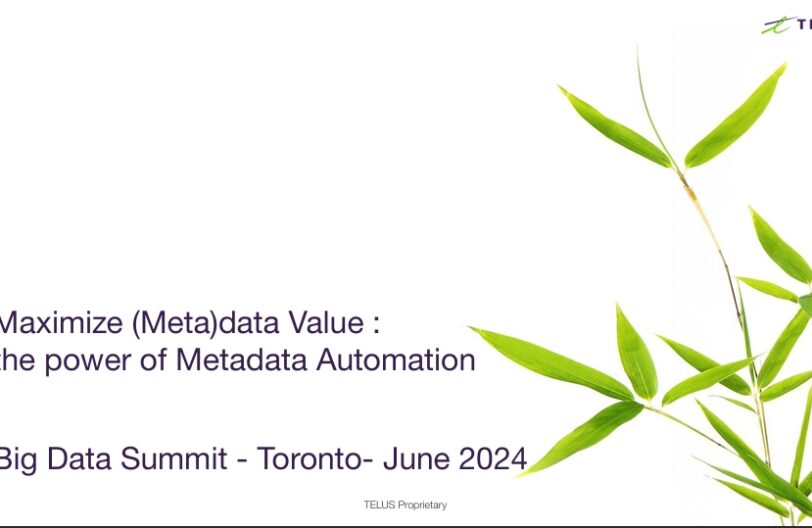Executive Summary
In an era of unprecedented data proliferation, organizations face a critical challenge: transforming data from a potential liability into a strategic asset. This whitepaper presents a groundbreaking approach to data governance, drawing on the expertise of two industry leaders who have successfully navigated the complex landscape of data management and organizational change.
Introduction: The Data Governance Revolution
The digital transformation landscape is rapidly evolving, challenging organizations to rethink their approach to data management. Traditional models of data handling are no longer sufficient in a world driven by artificial intelligence, complex regulatory environments, and increasingly sophisticated stakeholder expectations. This whitepaper represents a pivotal exploration of data governance as a strategic imperative, offering a comprehensive roadmap for organizations seeking to unlock the true potential of their data assets.
Our research, based on in-depth interviews and real-world case studies, reveals that successful data governance is not merely a technical challenge, but a profound organizational transformation. It requires a holistic approach that integrates technology, human behavior, strategic vision, and continuous learning.
The Strategic Imperative of Data Governance
In an increasingly data-driven world, organizations must move beyond traditional data management approaches. This section explores the fundamental shift from viewing data as a passive resource to treating it as a critical strategic asset that can drive innovation, efficiency, and competitive advantage.
Defining Data Governance
- Transition from data as a liability to a strategic asset
- Critical for organizational decision-making and operational efficiency
- Fundamental to leveraging data’s full potential
Industry-Specific Perspectives
Healthcare Lens (Gina’s Insights): Data as a life-saving resource
Critical components:
- Genomic data management
- Clinical code integration
- Patient trajectory analysis
Manufacturing Lens (Michael’s Perspective): Data as an operational efficiency driver
- Focus on reducing manual data processing
- Identifying and eliminating data inconsistencies
Change Management: The Human Element
Technology alone cannot transform an organization. This section delves into the critical human factors that determine the success or failure of data governance initiatives, highlighting the importance of cultural adaptation and stakeholder engagement.
Key Challenges:
- Organizational resistance
- Technical complexity
- Cultural transformation
Successful Implementation Strategies
- Reframe terminology (e.g., “data quality” vs. “data governance”)
- Create cross-functional understanding
- Develop experiential learning programs
- Practical Implementation Framework
Stakeholder Engagement Approach
- Active listening techniques
- Co-design methodologies
- Collaborative problem-solving
Change Management Tactics
- Executive-level motivation (cost savings, efficiency)
- Bottom-up engagement
- Tangible demonstration of value
AI and Data Governance: Emerging Considerations
Regulatory Landscape
- Evolving legal frameworks
- Custodianship of AI-generated data
- Minimum data set management
AI as a Data Governance Tool
- Automated data cleaning
- Pattern recognition
- Efficiency enhancement
Case Study: Transformative Data Governance
Global Furniture Group Example
Initial Challenge: Inconsistent data entry
Methodology: Comprehensive data audit & standardization of entry protocols
Outcomes: 80% reduction in data processing time, significant cost savings & improved decision-making capabilities.
Recommended Implementation Roadmap
Phase 1: Assessment
- Current data landscape evaluation
- Identify key stakeholders
- Develop initial engagement strategy
Phase 2: Design
- Create data governance framework
- Develop training programs
- Establish measurement metrics
Phase 3: Implementation
- Pilot program deployment
- Continuous feedback mechanism
- Iterative improvement
Phase 4: Scaling
- Organizational-wide rollout
- Advanced analytics integration
- Ongoing education and support
Key Takeaways
The journey of data governance is not a destination, but a continuous evolution. As we stand at the intersection of technological innovation and organizational strategy, the lessons learned from pioneering organizations like Quinte Health and Global Furniture Group provide a beacon for future transformation. Some key insights include:
- Data governance is fundamentally about people, not just technology
- Change management is critical to success
- Continuous learning and adaptation are essential
Conclusion
Emerging technologies like artificial intelligence and machine learning will continue to reshape our understanding of data governance. Organizations that view this as an opportunity for continuous learning and adaptation will be best positioned to thrive in the digital era. Effective data governance requires a holistic approach combining technological solutions, human-centered design, and strategic vision.
Data governance is more than a technical challenge—it is a strategic journey of organizational transformation. Success requires vision, commitment, and the courage to challenge existing paradigms.
Organizations must move beyond viewing data governance as a compliance exercise. It is a strategic opportunity to drive innovation, efficiency, and competitive advantage.
Recommended Next Steps:
- Conduct organizational data governance maturity assessment
- Develop cross-functional data governance team
- Create pilot program with measurable objectives
This whitepaper is based on the 2024 Big Data Canada Summit Panel featuring industry experts Gina Johar of Quinte Health and Michael Morris of Global Furniture Group.






